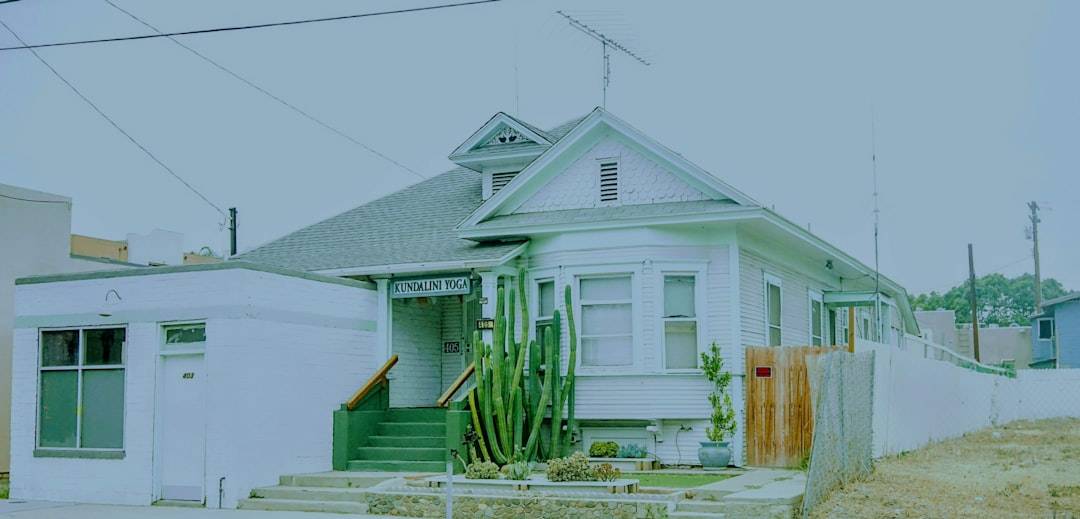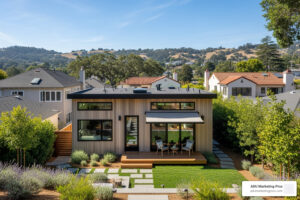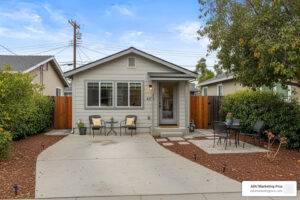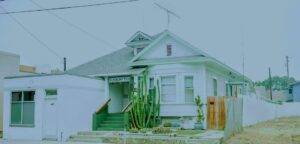Why California’s Tiny House Revolution is Reshaping the Golden State
The tiny house movement california has exploded from a quirky lifestyle choice into a mainstream housing solution. As home prices soar past $800,000 statewide, thousands of Californians are choosing to live large in spaces under 400 square feet.
Key Facts About California’s Tiny House Movement:
- Legal Status: Statewide adoption of tiny house building codes since 2020
- Cost Range: $20,000-$200,000+ vs. $800,000+ median home price
- Popular Locations: Fresno, Los Angeles, San Diego, Oakland all allow tiny homes
- Primary Uses: Accessory Dwelling Units (ADUs), homelessness solutions, rental income
- Communities: 11+ established tiny home communities from Park Delta Bay to Lemon Cove Village
The movement gained momentum after the 2008 housing crisis. Pioneers like Jay Shafer, founder of Tumbleweed Tiny House Company, legitimized the concept by building quality homes for under $50,000.
What began as a response to financial hardship has evolved. Today, enthusiasts choose small living for environmental reasons, minimalist lifestyles, and the freedom of mortgage-free living. From Silicon Valley to the Sierra Nevada, Californians have acceptd this micro-living revolution.
This guide covers what ADU professionals need to know about California’s tiny house market, from legal requirements and building codes to thriving communities and business opportunities.
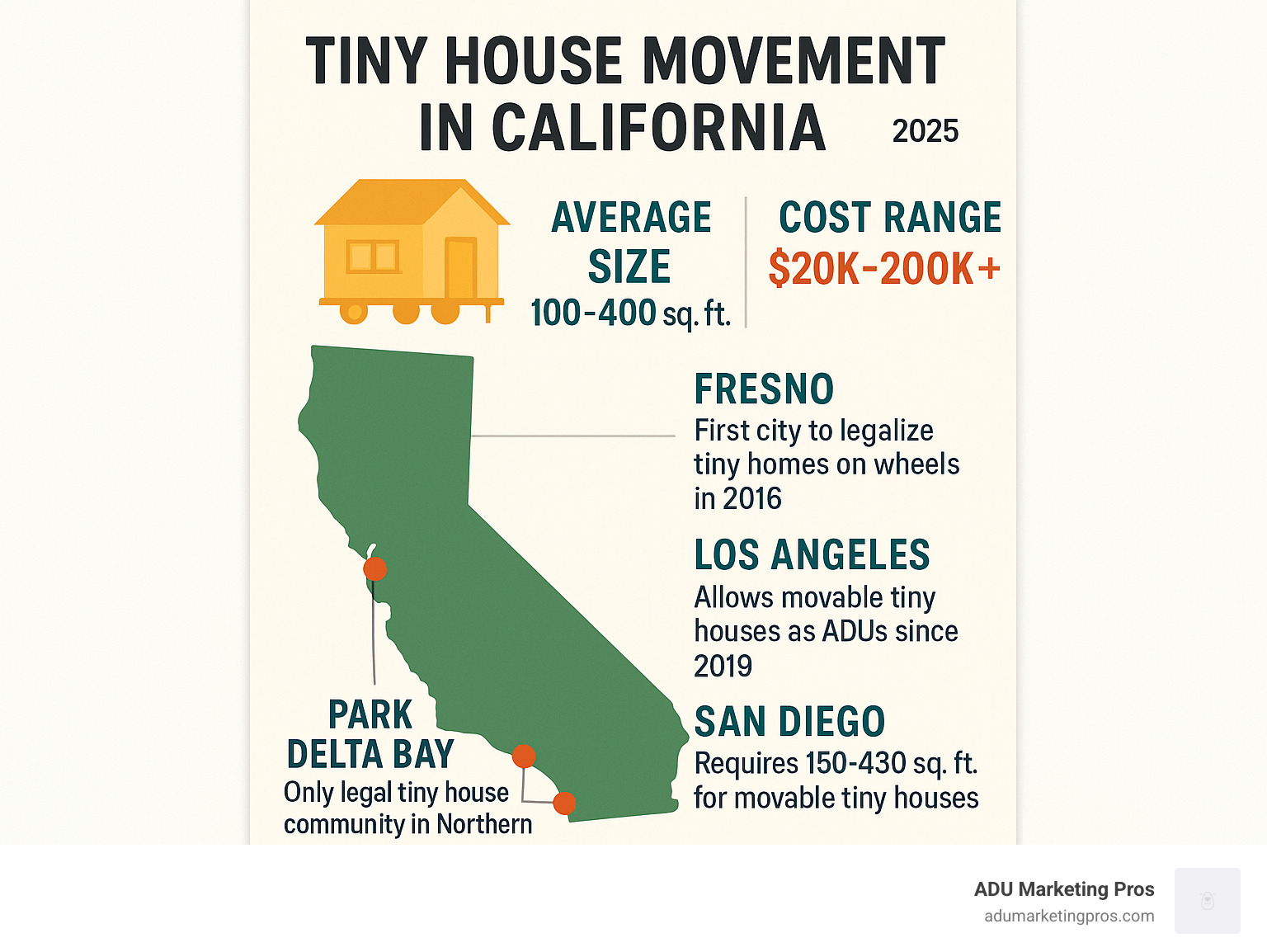
The Rise of the Tiny House Movement California: Why Go Small in the Golden State?
The appeal of tiny homes in California is a deep-seated shift in how people envision their lives. More Californians are embracing tiny living for a mix of smart financial choices, personal values, and environmental responsibility.
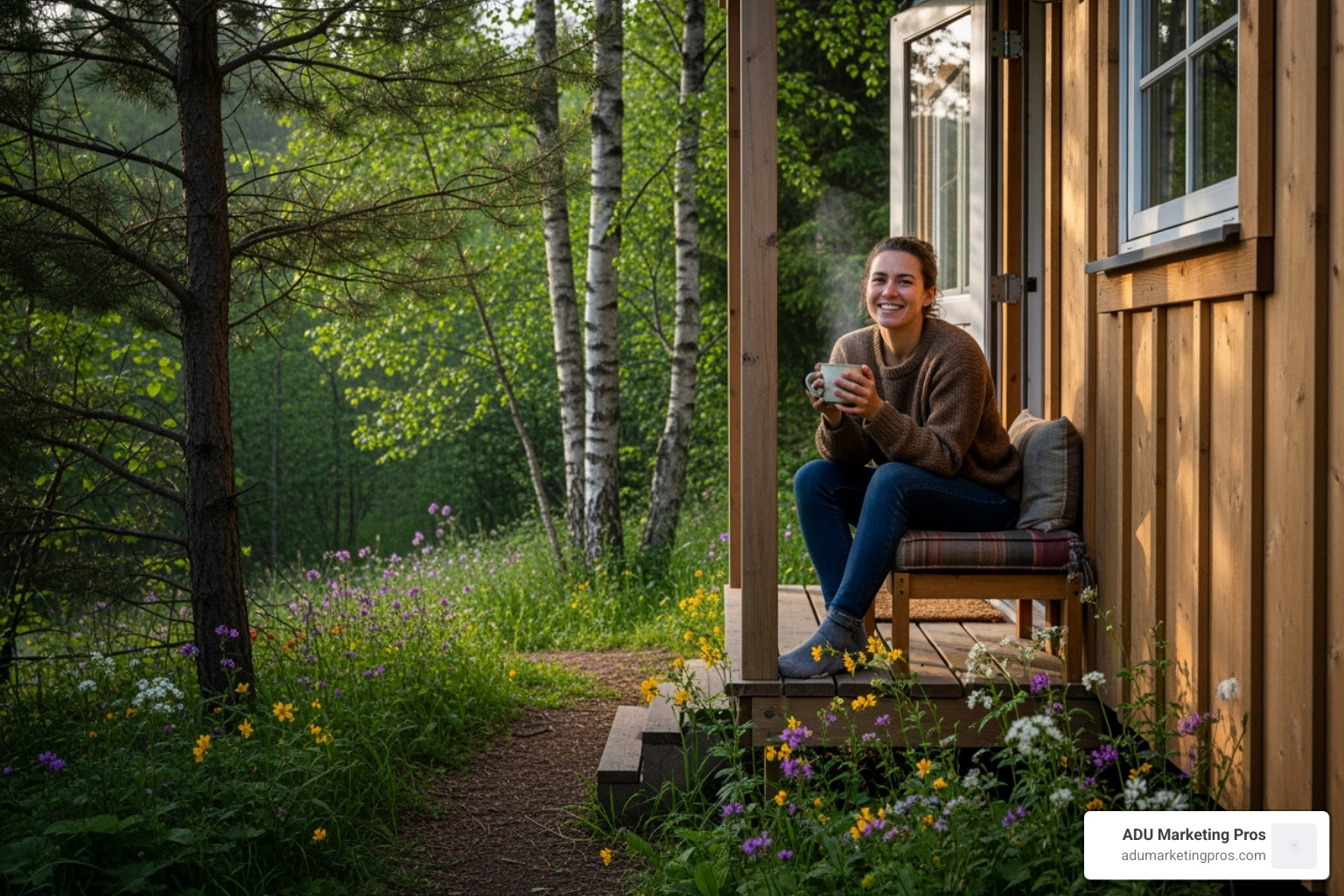
Financial Freedom and Housing Affordability
California’s notoriously tough housing market makes traditional homeownership a distant dream for many. Tiny homes offer a viable, attainable alternative. While the average new U.S. home ballooned to over 2,600 square feet, tiny houses typically stay under 400 square feet. Though prices have risen since the early days of $20,000-$50,000 builds, they remain far below traditional homes.
Choosing a tiny house means lower construction costs, reduced utility bills, and the chance to live mortgage-free. This financial freedom allows people to escape debt and build equity, offering a path to financial peace in California’s tough market. The tiny house movement California provides a tangible route to homeownership.
The Psychological Pull of Minimalism
Beyond finances, tiny living offers a powerful emotional draw: a simpler life with less clutter, less stress, and a focus on experiences over possessions. As Lindsay Graham, Ph.D., a research specialist at UC Berkeley’s Center for the Built Environment, notes, “I think tiny homes are really interesting because one of the things we’ve seen, as people design and personalize them, is that their values are reflected in their home space.”
Tiny living is about creating a home that mirrors personal values like self-sufficiency and adventure. It’s a mindful choice to simplify and build a living space that feels authentic and freeing. You can learn more by exploring The psychology behind the tiny house movement.
Environmental Consciousness
Amid California’s environmental challenges, the tiny house movement offers a way to reduce one’s ecological impact. Smaller homes use fewer resources to build and maintain, resulting in a much smaller carbon footprint. Many tiny homeowners choose sustainable building materials and design for passive heating and cooling. Features like solar panels, composting toilets, and rainwater harvesting systems are common, reflecting a commitment to living in harmony with the environment.
How to Legally Build and Place a Tiny House in California
Dreaming of a tiny home in California? The state has made huge strides in making tiny living a legal reality. Understanding the rules is the first step to joining the tiny house movement california.
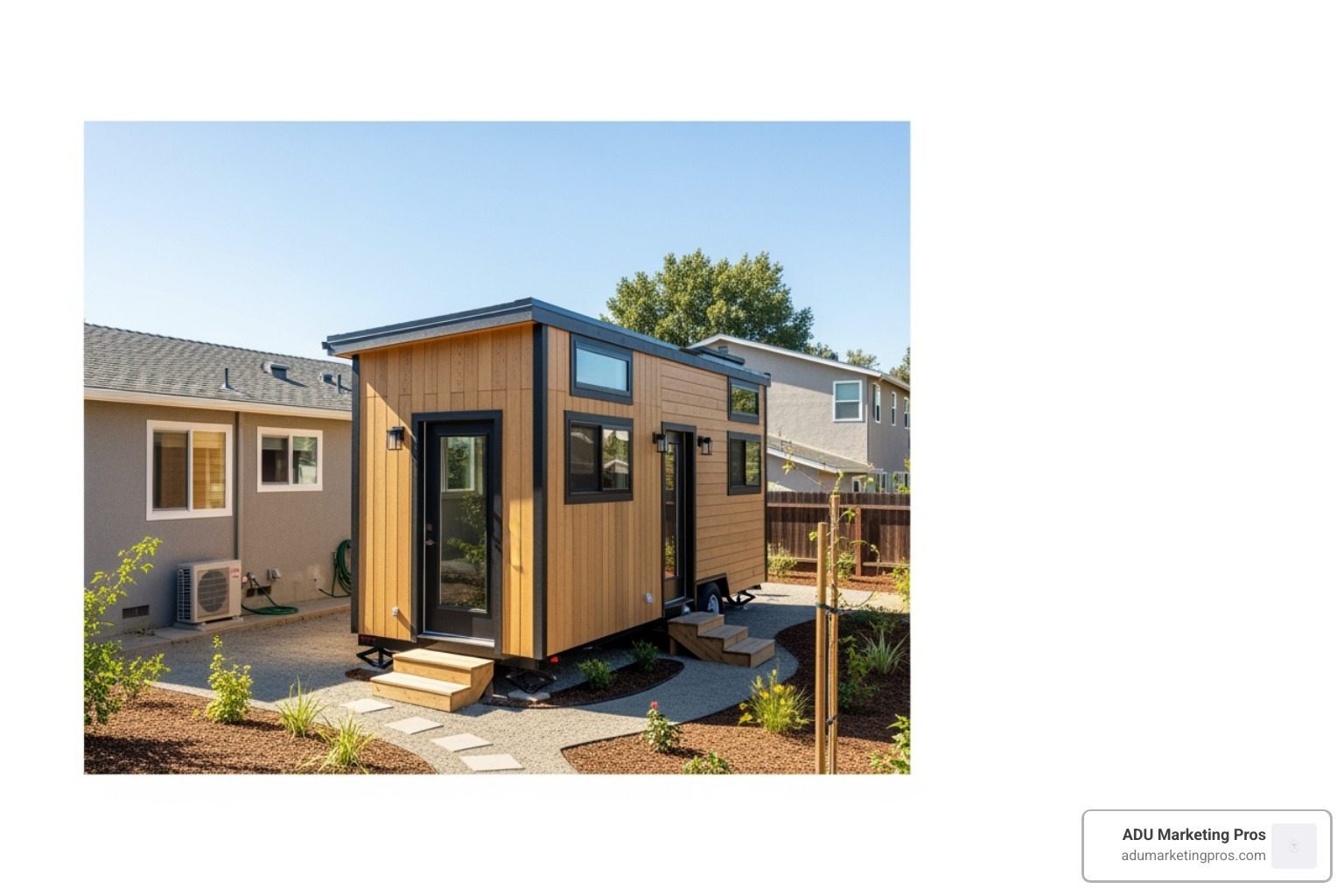
Understanding the Legal Classifications: THOW vs. Foundation
It’s crucial to understand the two main types of tiny homes, as the legal requirements differ for each.
Tiny Homes on Wheels (THOWs) are built on a trailer chassis and are considered mobile. They often fall under Recreational Vehicle (RV) standards, such as those from the American National Standards Institute (ANSI). Their mobility is a major benefit but comes with specific guidelines.
Tiny Homes on a Permanent Foundation are built directly on the land like a traditional house. They must follow local building codes and are often built as Accessory Dwelling Units (ADUs)—a second, smaller home on a property. The ADU path has become a popular and legal way to place a tiny home in California.
Navigating the Legal Landscape of the tiny house movement california
California has been a trailblazer in making tiny living legally accessible. A game-changer was the statewide adoption of Appendix Q Tiny Houses from the 2018 International Residential Code (IRC). This allows tiny homes on foundations that meet these codes to receive a Certificate of Occupancy, just like a traditional house. You can read the code here: Appendix Q Tiny Houses.
Pioneering cities have also created supportive ordinances. Fresno began allowing movable tiny homes as backyard cottages in 2016. Los Angeles followed in 2019, permitting them as ADUs (150-430 sq ft) with DMV licensing. San Diego, Oakland, and San Luis Obispo have also established clear policies for tiny homes, including THOWs as ADUs.
Despite this progress, local zoning laws vary. It’s crucial to check regulations for your specific city or county. ADU experts are invaluable for navigating these complexities, especially in markets like Los Angeles, San Diego, and the San Francisco Bay Area.
Practical Steps: Permits, Utilities, and Placement
To build and place your tiny home, you’ll need permits for placement, utility hookups, and code compliance. You’ll also need to connect to water, sewer, and electricity. Foundation homes typically connect to city services, while THOWs have flexible options, including RV park hookups or off-grid systems like solar panels and composting toilets.
Finding land is often the biggest hurdle. Popular options include:
- Backyard Placement as an ADU: The most popular and legally sound option in California.
- RV and Mobile Home Parks: Many now welcome THOWs for long-term stays.
- Tiny House Communities: These offer a ready-made solution with infrastructure and community.
- Rural Land: May offer more flexibility, but requires careful planning for wells and septic systems.
Finally, if you live in a community with a Homeowners Association (HOA), always check their rules first, as they may have specific restrictions.
California’s Pioneering Tiny Home Communities
California is a hub for innovative tiny home communities that cater to diverse lifestyles, offering connection, shared values, and a sense of belonging.
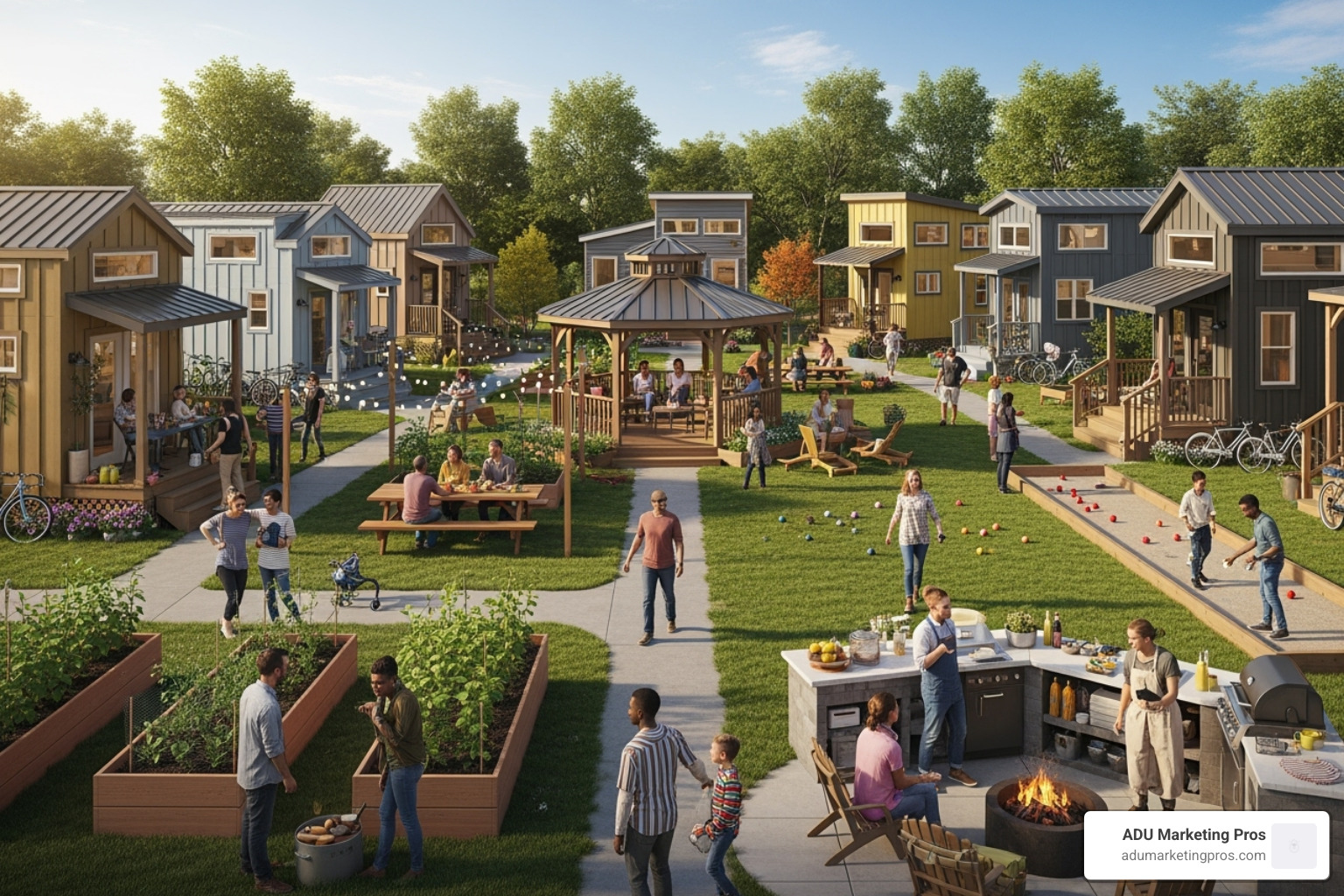
Northern California: Park Delta Bay
Park Delta Bay, located in the Sacramento-San Joaquin River Delta, is Northern California’s only legally recognized tiny house community. It offers a rural, water-centric lifestyle with activities like fishing and boating, appealing to retirees and nature lovers seeking a quiet life with strong community bonds. You can learn more about it and other communities here: Park Delta Bay.
Southern California: Tiny House Block & Lemon Cove Village
Southern California’s scene is equally vibrant. Tiny House Block, near Mount Laguna, is a legally recognized community focused on nature-centric living. Nearby, Lemon Cove Village, close to Sequoia National Park, is an affordable, family-friendly option with monthly rates for THOWs starting around $450. Its proximity to natural wonders makes it ideal for outdoor enthusiasts.
Niche and Luxury Living: Palm Springs & Sonoma
The tiny house movement california also includes luxury and niche options. The Palm Canyon Mobile Club in Palm Springs offers mid-century modern tiny homes with resort-style amenities, proving tiny living can be lavish. In wine country, Orchard Village in Sonoma Valley provides a unique lifestyle. Furthermore, 55+ communities like Friendly Village of Modesto and Royal Palms in Cathedral City cater to active retirees with amenities like clubhouses, pools, and social activities, fostering a supportive environment for their golden years.
Tiny Homes as a Solution for California’s Big Problems
California’s housing crisis isn’t just statistics on a page—it’s families sleeping in cars, teachers commuting three hours to afford rent, and entire communities being priced out of their hometowns. The tiny house movement california has evolved beyond personal lifestyle choices to become a genuine tool for tackling these massive challenges.
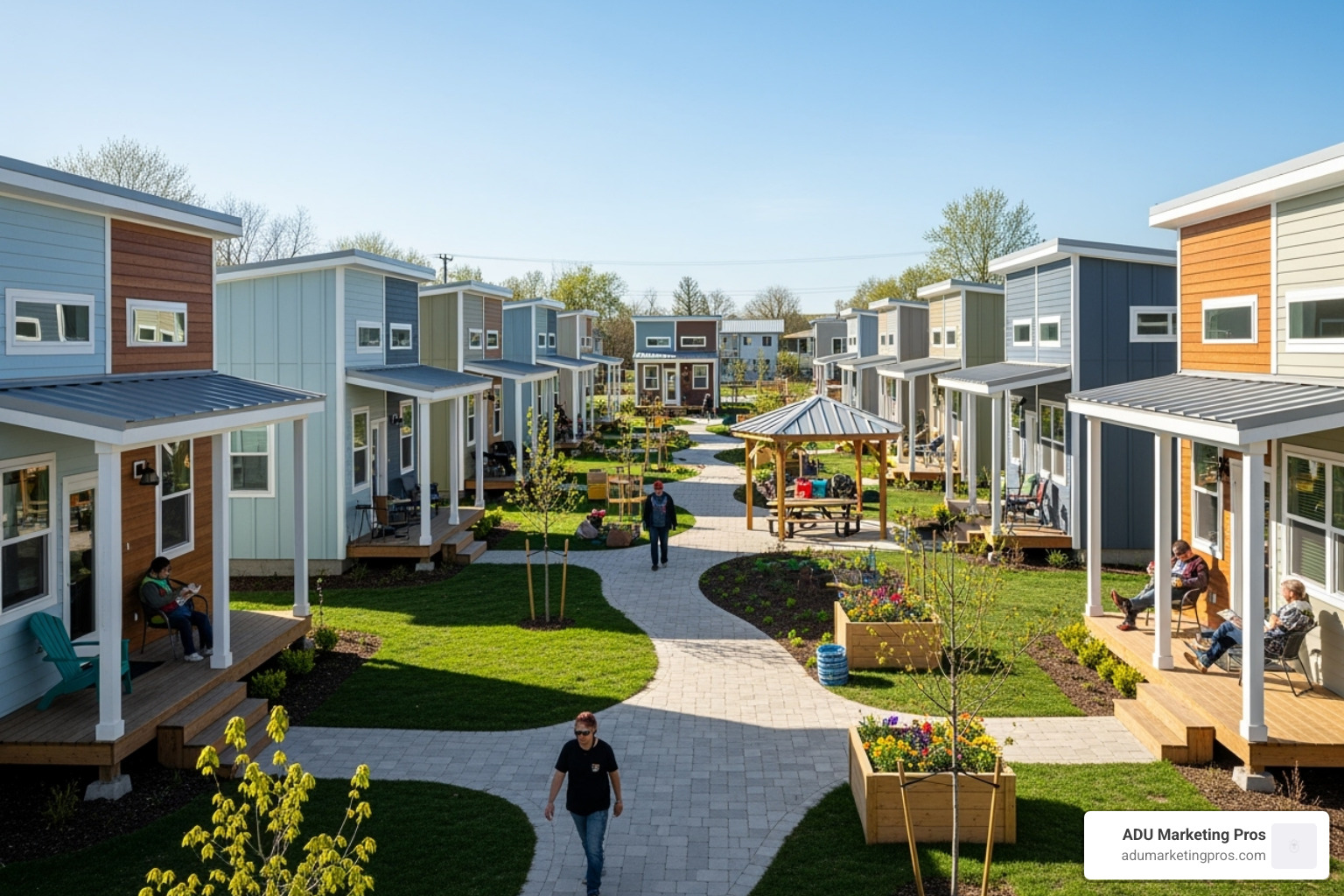
The Future of the tiny house movement california: ADUs and Beyond
With California needing millions of new housing units and land being scarce, tiny homes as Accessory Dwelling Units (ADUs) offer a powerful solution. They allow for the addition of housing in existing backyards, a process known as “gentle density.” A single-family lot can accommodate multiple households by adding a tiny ADU, increasing housing density without altering neighborhood character.
For homeowners, a tiny ADU can generate $1,500 to $3,000 in monthly rental income, helping them afford mortgages or build wealth. They are also perfect for multi-generational living, allowing aging parents or adult children to live independently but close to family. California’s adoption of tiny home building codes signals a serious commitment to using creative solutions like ADUs to bridge the housing gap.
Addressing Homelessness, One Tiny Home at a Time
The homelessness crisis in California’s cities has spurred the rise of tiny home villages as a more humane and effective alternative to traditional shelters. Organizations like Hope of the Valley in Los Angeles provide residents with private, 64-square-foot units with a locking door, electricity, and heat, offering dignity and security.
These villages are stepping stones to stability, providing safe storage, quiet space, and on-site services like job training and counseling. The results are promising: tiny home villages report transition-to-permanent-housing rates of around 50%, far exceeding the 15% seen in traditional shelters. While the per-bed cost is higher—roughly $22,500 to $34,000 annually—the superior long-term outcomes justify the investment. From 34 nationwide in 2019 to over 123 by 2024, these villages show that providing shelter with dignity is a more effective path to ending homelessness.
Frequently Asked Questions about the Tiny House Movement in California
When we talk with people interested in the tiny house movement california, the same questions come up again and again. Whether you’re a potential tiny home owner or a builder looking to serve this market, these answers will help clarify the practical realities of tiny living in the Golden State.
How much does it cost to build a tiny house in California?
The cost varies widely based on your approach and finishes. A DIY build using salvaged materials can still come in under $20,000. However, most professionally built tiny homes cost between $50,000 and $150,000, depending on size, materials, and design complexity. Luxury tiny homes with high-end finishes can exceed $200,000. Land costs are a separate and significant expense, whether you’re buying property or renting a spot.
Can I park my tiny house on wheels anywhere in California?
This is probably the most important question we get, and the answer might surprise you. No, you cannot legally park and live in a Tiny House on Wheels (THOW) just anywhere in California, despite the state’s progressive tiny home laws.
Legal options for parking a THOW include:
- Designated RV parks and mobile home parks that welcome tiny homes.
- Legal tiny home communities like Park Delta Bay or Lemon Cove Village.
- As a permitted Accessory Dwelling Unit (ADU) in the backyard of a primary residence. Cities like Los Angeles, San Diego, and Fresno have created specific ordinances allowing this.
Always check with your local city or county planning department before making any commitments. The rules vary significantly from place to place, and what’s legal in one city might not be allowed in the next town over.
Is financing available for tiny homes?
Financing a tiny home requires a different approach than buying a traditional house, but plenty of options exist once you understand the landscape.
Traditional mortgages typically won’t work for THOWs because they’re classified as personal property rather than real estate. Common financing routes include:
- RV Loans: A popular option for THOWs, offered by many banks and credit unions.
- Personal Loans: An unsecured option, though often with higher interest rates.
- Manufacturer Financing: Some builders offer in-house financing or partner with specialized lenders.
- Credit Unions: Often more flexible than large banks and may offer unique loan products.
For tiny homes built on permanent foundations and permitted as ADUs, traditional mortgages, home equity loans, or lines of credit are viable options, as they are considered real property. It’s best to shop around and be clear about your tiny home type and intended use.
Conclusion
The tiny house movement california has evolved from a niche interest into a mainstream solution for some of the state’s biggest challenges. It represents a profound shift towards intentional living, financial freedom, and sustainability, offering answers to the housing and homelessness crises.
Throughout this guide, we’ve explored the financial and psychological drivers of the movement, steerd the evolving legal landscape, and showcased pioneering communities. The widespread adoption of Accessory Dwelling Unit (ADU) policies underscores the growing recognition of tiny homes as a vital part of California’s housing future.
Now, if you’re an ADU builder or architect, you’re likely seeing the immense potential here. This isn’t just about building small homes; it’s about being part of a movement that’s reshaping communities and lives. But connecting with this passionate, growing market requires more than just great designs and construction. It requires smart, expert marketing. Understanding all the nuances – from the latest zoning laws to the deep psychological motivations of tiny home dwellers – allows us to craft marketing strategies that truly speak to potential clients and help your business thrive.
We’re here to help you not just steer, but truly steer this exciting and changing sector.
Ready to make a big impact in the tiny home and ADU market? Explore how to market your tiny home and ADU projects in the Bay Area.

